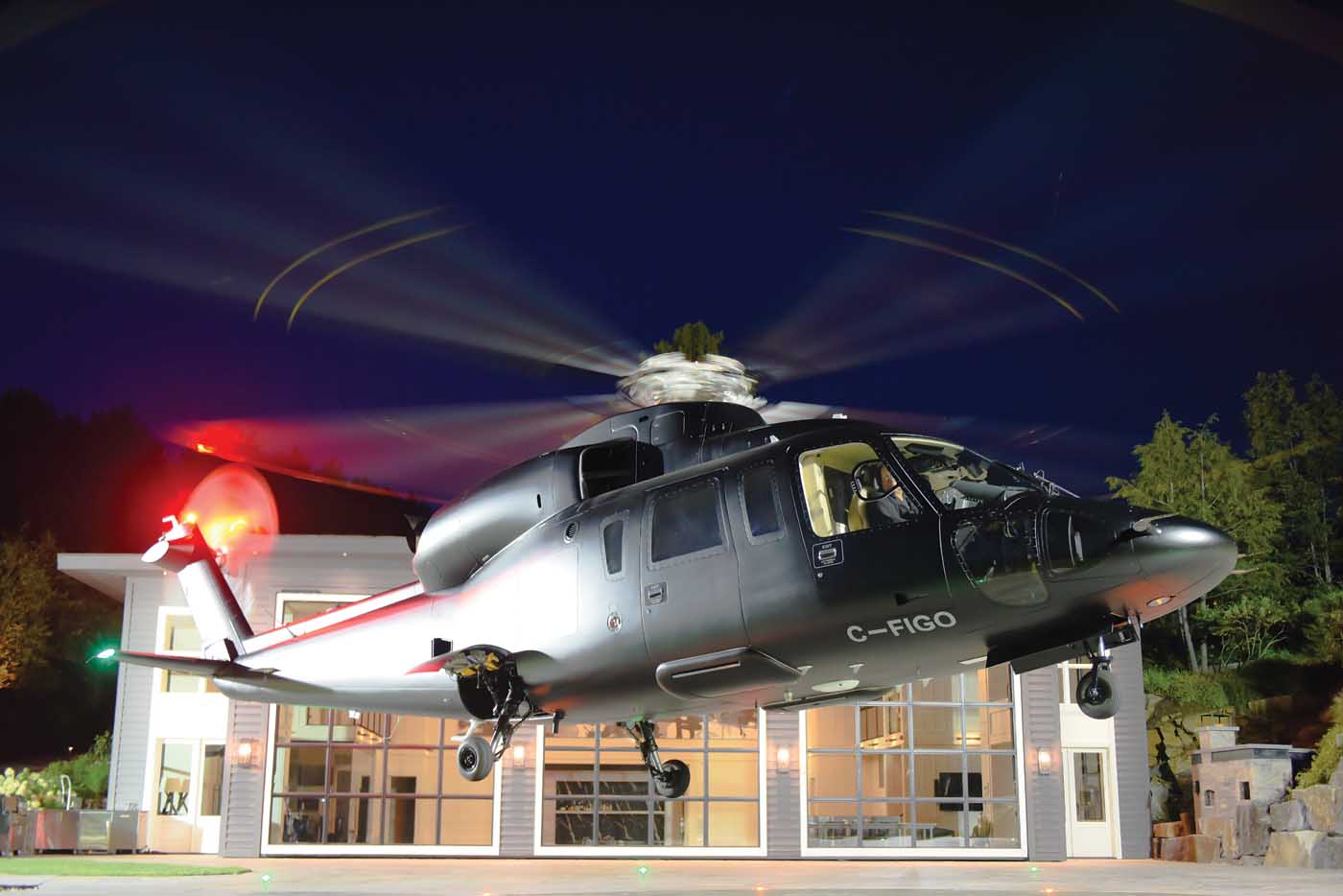Estimated reading time 11 minutes, 58 seconds.
On May 7 and 8, National Helicopters, a utility operator and training school based on the northern edge of the Greater Toronto Area (GTA) in Kleinburg, Ont., played host to a VIP-configured Bell 505 Jet Ranger X. The aircraft, visiting from the Bell facility in Mirabel, Que., was there to perform demo flights for over a dozen potential private customers in the region.

While the demonstration was, in relative terms, quite small, organizer Dan Munro, president of National Helicopters, said the interest it generated was illustrative of a growing corporate market in the region — and a desire for owners to upgrade to newer technology in the turbine market.
“The majority of these customers currently operate their own helicopters, which range from the [Robinson] R22, R44, and R66, to the Bell 47 and Bell 206 JetRanger,” he said.
At just over $1 million for a basic aircraft, Bell has priced the 505 to compete directly against the Robinson R66 Turbine, which has been a major success for Robinson since it debuted on the market in 2010. Bell has now delivered over 150 505s, with the private market proving a rich source of orders.
Munro joined one of the demo flights, and said he had been impressed with the 505’s power and the visibility from inside the cockpit.
“When I flew it, we had half a tank of fuel, myself, and four passengers — and we just basically performed a vertical takeoff from the facility,” he said. “Everybody was very impressed with the [505’s] power and the simplicity of operation.”
Among those taking part in the flights were several customers who are using their existing aircraft to support their work in the newly-legalized marijuana industry. “The base of the aviation business [in the GTA] is certainly changing,” said Munro. “A significant number of our corporate charters last summer were for the marijuana grow-op industry.”
Within this new industry, the aircraft are used for flying investors out to the various marijuana farms and facilities that have sprouted up across the Southwestern Ontario countryside. For these charter flights, National is typically asked to use its corporate Bell 430 or Leonardo AW109.
“These people are legitimate customers and they seem to have some cashflow available to put into these helicopters,” said Munro. “It’s already huge [business] — people have no idea. A couple of former students manufacture the growing equipment for these grow ops — the watering system and the ultraviolet lighting systems — and they were telling me they can’t keep up with the demand. The requirement for growing equipment is just unbelievable. It’s become a real part of our agriculture industry.”
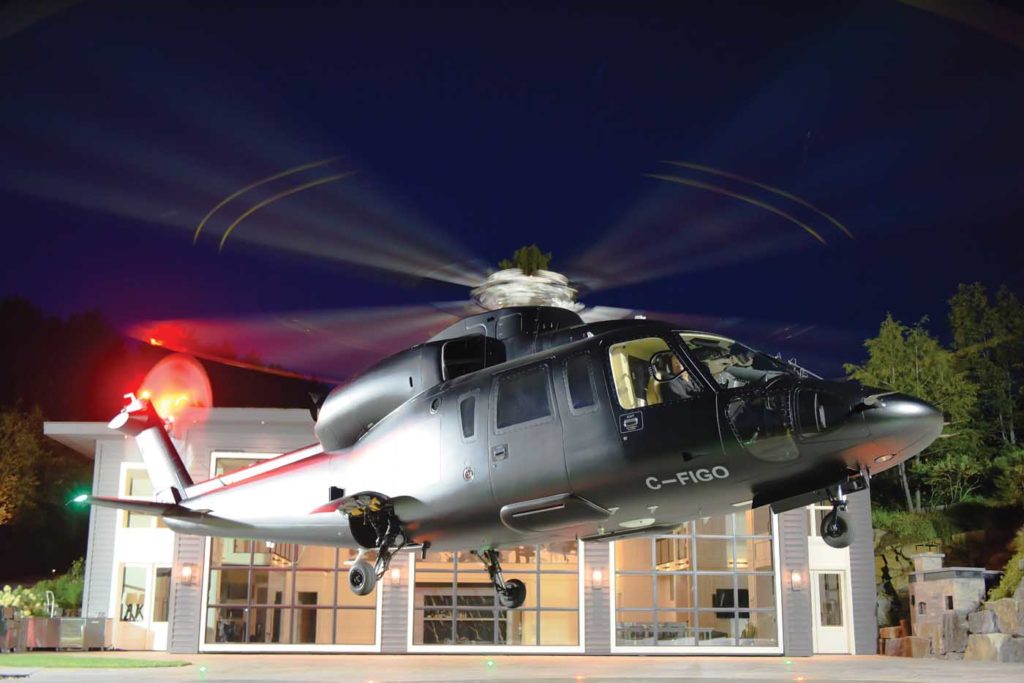
The use of the aircraft for business, rather than as a means to travel between work and a vacation property, is reflected in the wider corporate market in the region, Munro added — as well as a move for many to purchase their own helicopter rather than simply chartering one. This has resulted in a boom in third-party maintenance work for companies like National.
“Business has probably doubled here in the last eight years as far as third party maintenance is concerned,” said Munro. National keeps about a dozen customer aircraft in its hangar, and supports a fleet of about 24, including its own.
Despite the growth in corporate ownership, there is still a sufficiently high demand for corporate charter — to take clients golfing, to their cottages, to weddings or meetings — that National has largely moved away from the general utility work that many Canadian operators have built their businesses around to focus on it.
Managing the corporate fleet
Dave Tommasini, president and owner at Four Seasons Aviation, said he has noticed a similar trend in terms of an increase in the amount of corporate management work available. Four Seasons has provided both corporate management and charter over the years, flying or managing types including the Airbus AS350/H125 AStar, AS355 TwinStar, Leonardo AW109 and AW119, Sikorsky S-76, and Bell 429.
“Over the last five years or so, more and more corporate customers have decided to buy their own ships, and then get us, or operators like us, to fly them around and manage them,” he told Skies. “They want to have an aircraft at their disposal to fit their mission profiles — if they’re going up to the cottage, or if they’ve got business opportunities that they need to use it for.”
Tommasini said there has traditionally been a heavy flow of charter aircraft between Toronto and “Cottage Country” in the Muskoka region, a 30- to 40-minute flight north of the city. Flying avoids a packed highway that comes to a standstill around summer weekends.
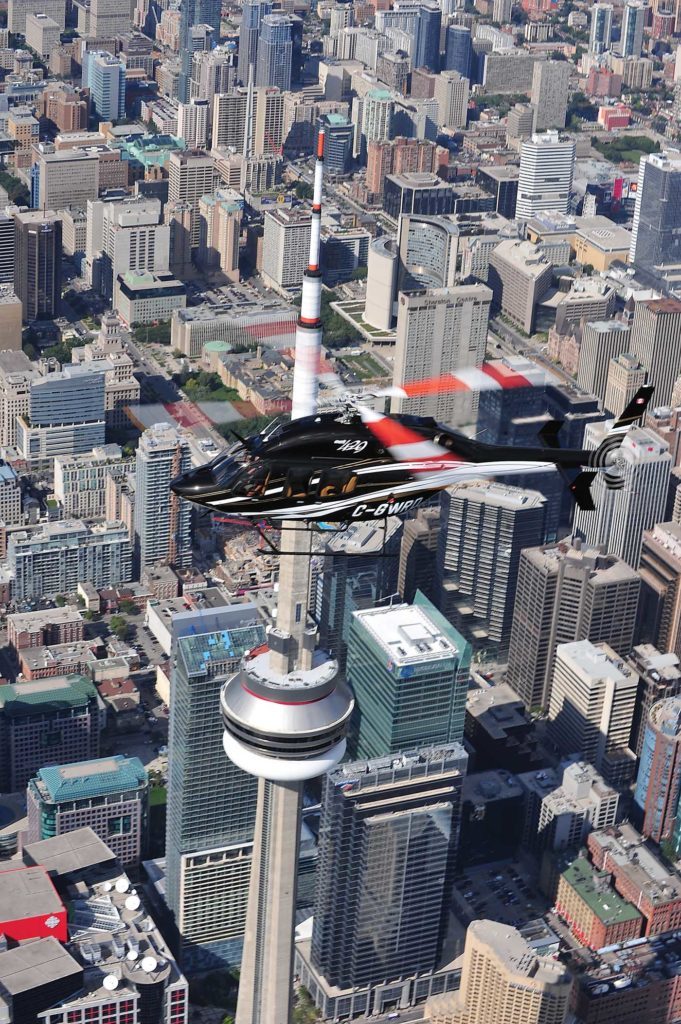
These types of business-to-personal flights are more common in the region, said Tommasini, rather than aircraft being used to travel between meetings, as might be the case in the Northeastern U.S. “Increased development of helicopter-supportive infrastructure would probably encourage more corporate use of helicopters within the Toronto area [itself],” he said.
Four Seasons’ corporate management work is offered in collaboration with Heli-Lynx, a completion and maintenance, repair and overhaul company based in Stoney Creek, Ont.
“We’re working with Four Seasons Aviation and HelicoStore in Quebec to try to promote helicopters in general in the Greater Toronto Area, and expose helicopters to people who otherwise haven’t thought about how this mode of travel could enhance their life,” said Heli-Lynx co-owner Rob Tyler.
In addition to the maintenance provided for corporate customers as part of the management program, Heli-Lynx has also focused its completion work on the corporate market. The company recently delivered a high-level VIP H125 completion to a private customer from Texas, and Tyler said such projects represented a huge growth opportunity.
“That’s the direction of the custom VIP ships that we want to see, we want to produce, maintain and support; we want to promote helicopters for the private owners,” he said.
Along the same vein, the company is rebooting its “FX” program, which gives the AS350/H125 new electrical systems and a new Honeywell LTS 101-series engine, with corporate customers primarily the target. Replacing the AStar’s existing Safran Arriel engine aims to provide longer periods between overhauls, as the LTS 101 has no calendar limit. Heli-Lynx believes this holds great appeal to owners who aren’t flying enough to get the full value from a time-limited engine.
A move to the mediums
Hoss Golanbari, vice-president of EuroTec Canada — a helicopter sales, support and completion center based near Hamilton, Ont. — said that while the market in Southwestern Ontario has definitely grown over the past few years, it’s still relatively small compared to the use of private aircraft in Quebec.
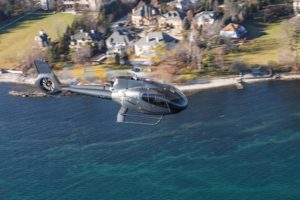
“We currently manage and maintain several aircraft for corporate and private owners here in the Toronto region,” said Golanbari. “The difference between Quebec and Ontario is that the private owners in Quebec use the aircraft primarily for travel to and from private hunting and fishing lodges in remote areas in the province, while those in Ontario use the helicopter largely for corporate use and to avoid the traffic going to and from cottage country in the summer time.”
Golanbari said his clients typically start with a single-engine helicopter, before moving onto a light twin or heavier aircraft.
“Over the past few years, the heavier cabin class twins like the Sikorsky S-76 have been a very good option for some of our corporate clients, who choose the initial lower acquisition offset by the slightly higher maintenance, fuel and insurance costs,” he said.
A number of private S-76s have recently arrived in the GTA, including a VIP S-76D operated by Fig Air. That aircraft was the first of the type to enter service in Canada, and has been used solely for corporate charter work.
Fig Air, which launched in 2015 at Toronto Pearson International Airport, also owns a Bell 206L LongRanger and manages a Sikorsky S-76C++ for a client.
“We don’t really advertise — we’re kind of a low-profile operation — but word seems to get around,” said Dean Fex, the company’s operations manager. “We have a steady stream of charter work. Business is growing every year.”
Many of those flights are to and from the Muskoka region, but the company has also taken clients as far as New York.
However, to truly expand the use of helicopters in Toronto, Fex believes a downtown helipad must be built — and Fig Air is working hard to make that happen in the city’s Port Lands area.

Another new entrant in the corporate charter/management market in the GTA is Flight Solutions & Services (FSS). Based at Toronto Pearson airport, the company manages three private helicopters (including an MD Helicopters MD 520N and a Sikorsky S76C+) and has one on a commercial certificate — in addition to a longstanding fixed-wing fleet.
Ian McDougall, chair and CEO of FSS, said the growth in rotary-wing interest the company had seen was likely due to several factors.
“You get a few people who develop an interest in helicopters and start flying,” he said. “It becomes more a topic of conversation amongst people who can afford it and either are or become interested in having them.”
McDougall also identified a demographic shift, as the city’s wealthy start to move to the north of the city. “It’s not just Muskoka, you can see it in places like Collingwood and elsewhere,” he said.
In terms of future expansion, FSS is looking at different operating models that have proven successful elsewhere in North America. “We have looked at Blade out of New York . . . and it is a model of great interest to us,” he said. “We want to keep an eye on any possibilities around a similar model.”
An OEM’s view
Airbus Helicopters claims 44 per cent of the VIP helicopter market in Canada, having steadily grown its share over the past five years.
According to Brian Reid, senior director of sales, Airbus Helicopters North America, the H125, H130 and H135 are popular choices for the VIP role, while the larger light twin H145 has also seen a surprising amount of success in the sector. And the Canadian launch customer for the H160 — the upcoming medium twin — will be a VIP aircraft.
“Clearly our hopes are, once the aircraft is delivered, more will follow, because it’s just going to be an amazing machine and its appeal to that particular market is going to be significant,” said Reid.
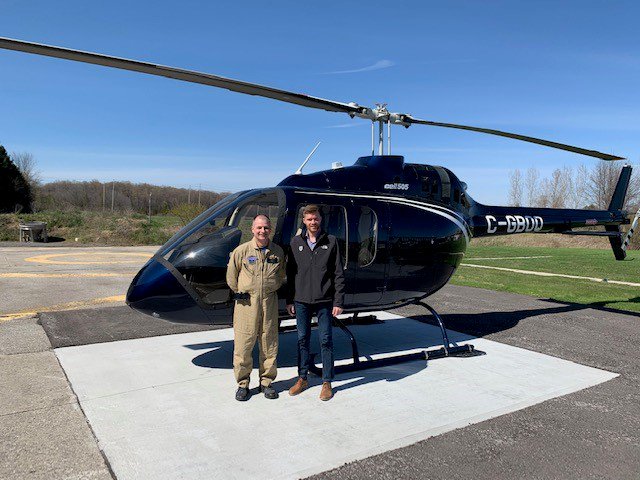
Airbus has also had decent success providing the VIP completions to aircraft, with Reid claiming the company wants to make the whole process a VIP experience — providing full story boards with interior and exterior renderings, and dedicating a program manager to each particular aircraft and customer.
“If the customer wants to hear every Friday what the state of their aircraft is, we’ll do that and send pictures of what happened this week with a quick update,” he said. “Or, if the customer prefers only to hear once every two or three weeks, we customize that whole experience at their request to make sure we’re giving them exactly what they need.”
Will Fulton, head of marketing, Airbus Helicopters North America, said many VIP customers still embrace the utilitarian nature of helicopters.
“We find that even our billionaire VIP customers . . . know they’re going to go to their cabin that they can only access by a helicopter, so for them, they embrace a good blend of form and function with fit and finish.”
In terms of use, Reid said VIP customers are finding benefits to using the aircraft for business as well as to escape the city.
“I think the high net worth individuals are realizing that avoiding sitting in traffic for two hours to go across town is a very useful part of their business,” he said. “They’re able to actually conduct meetings in the back of the aircraft, in particular the twin-engine helicopters that we offer, and make useful time of travel. And obviously in Eastern Canada, especially the Greater Toronto Area, you’re seeing a lot of that desire to eliminate the traffic that you can see going up to the family cottage — and the usefulness of the aircraft to move things like equipment, furniture, and supplies, back and forth.”
The VIP market around Canada’s largest city is clearly growing, as executives and wealthy individuals discover the various benefits that having a helicopter can provide them, both personally and for their work. Should Toronto’s infrastructure change to make the city’s downtown even more accessible by helicopter, that growth could become exponential.
